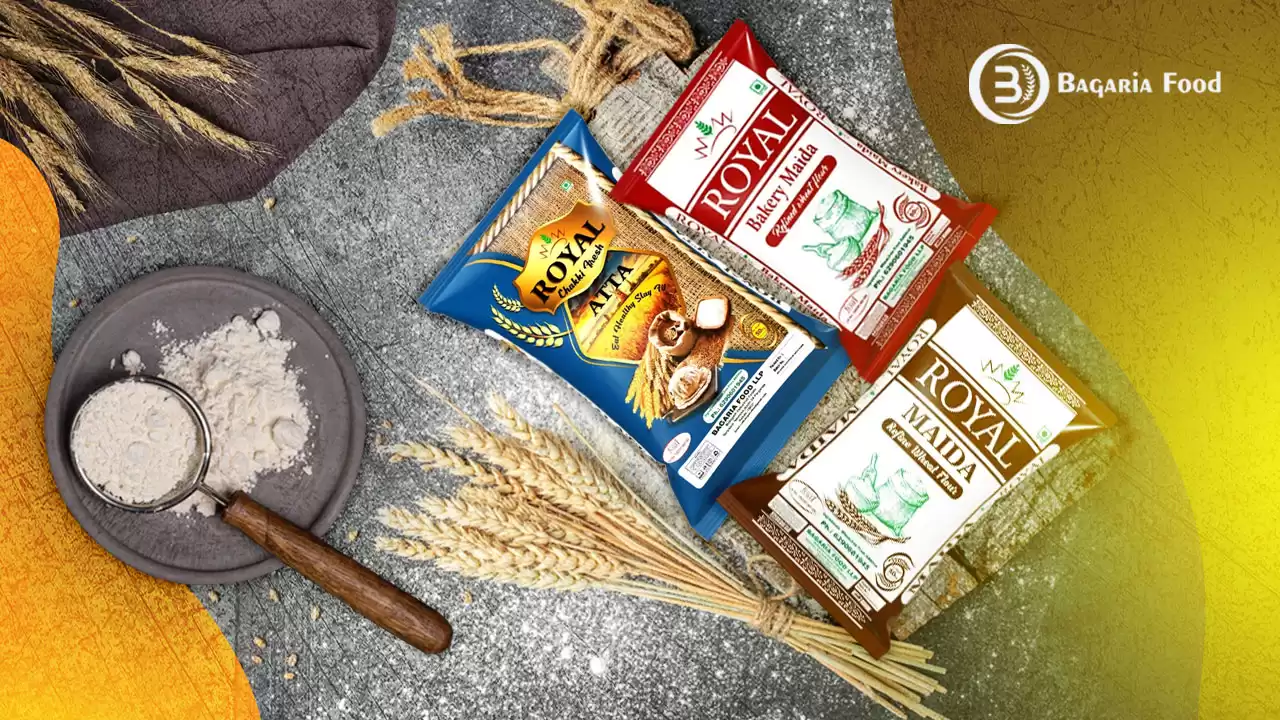As people are gradually leaning towards health-conscious choices, it is becoming a bit difficult to choose sustainable options that leave no damage to health overall. In the context of daily meals, it is an overwhelming task to find the best gluten-free flowers that can suit your dietary preferences. With an increased number of people suffering from celiac disease and gluten sensitivity, the demand for gluten-free options is on the rise. The good news is that in the marketplace, there is a variety of gluten-free flour that turns ordinary dishes into healthier alternatives. In this guide, we aim to provide a detailed overview of various gluten-free atta wheat flours, their nutritional benefits, and tips for successful baking.
An overview Of Gluten-free flour
When the entire world is hankering for gluten-free flour, it is a must-have action to understand what gluten is and how it contributes to baking and other activities. Gluten in reality is a protein found in wheat and other forms of grains such as rye and barley. The flour that is derived directly from gluten often gives rise to health-related concerns, but fortunately, there are multiple gluten-free flour alternatives available in the marketplace. To gather more insights on gluten-free flours, let’s move to the below pointers.
Popular Gluten-Free Flours
- Almond Flour
Almond flour is made from finely ground blanched almonds and is known for its rich, nutty flavour. It is high in healthy fats, protein, and vitamin E, making it a nutritious choice for baking. Almond flour adds moisture and tenderness to baked goods, making it ideal for cookies, pancakes, and breads. However, its higher fat content means it is slightly more caloric than traditional fresh chakki atta.
- Coconut Flour
Coconut flour is derived from dried coconut meat and is known for its subtly sweet flavour. It is highly absorbent and requires more liquid in recipes compared to other flours. Rich in fibre and healthy fats, coconut flour is often used in gluten-free baking to add moisture and texture. It is particularly used to prepare cakes and muffins and these kinds of dishes.
- Quinoa Flour
Made from quinoa seeds, Quinoa flour offers a subtle nutty taste and at the same time, it is a primary source of protein. For vegans and vegetarians, this flour can act as a major source for supplying the required amount of protein and amino acids in the daily menu. Besides the premium quality chakki atta, quinoa flour can be a great addition to your kitchen. In addition to that, this flour can be considered for adding an extra dose of protein to your daily meal.
- Tapioca Flour
Tapioca flour, unlike the traditional flour alternatives, is extracted from the cassava root and it is gaining popularity these days for its starchy properties. The most intriguing aspect of this particular flour is that it is devoid of the fat and cholesterol that can prove to be good for sound heart health. Besides, it is rich in carbohydrates and it can be used as a thickening agent in the preparation of sauces or soups. To keep this versatile ingredient in your kitchen, all you need to do is connect with the best flour suppliers to grab fresh tapioca flour.
- Chickpea Flour
Made from dried chickpeas, chickpea flour has a nutty flavour and at the same time, it is rich in protein and fibre. That is why, the inclusion of this flour in daily meals can improve digestion and fill the deficiency of protein. For preparing the fritters and other savoury dishes, there can be no alternative to chickpea flour. Chickpea flour can also be used in baking when combined with other gluten-free flour.
How Can You Create A Gluten-Free Wheat Flour blend At Home?
Creating your gluten-free flour blend at home can be a rewarding experience. Or else, you have the option of directly reaching out to the best flour suppliers and asking them to prepare a unique wheat flour blend. Mixing the different types of gluten-free flours, you can achieve the desired texture and flavour for various recipes. Here are the steps by following which you can effortlessly create a balanced gluten-free flour blend.
- Choosing the base flour
Begin the process by mixing one or more base flours and the combination of the whole grain and a starchy flour is always a great option. For instance, you are free to mix brown rice flour or oat flour with tapioca flour to create a great blend.
- Adding the binding agents
In the second step, you need bonding agents like psyllium husk powder or something like that.
- Accurate measurement
In this step, you need to come up with the right measurement to avoid the excess amount of flour in the blend.
- Thorough mixing
Once you have gathered the flour and binding agents together, it’s the best time to mix them in a large bowl.
- Proper Storage
As gluten-free flours have a varied shelf-life, it is of utmost importance to maintain freshness by following the proper storage protocols.
FAQs
Q1. How should I store my homemade gluten-free flour blend?
Store your gluten-free blend in an airtight container in a cool, dry place. For a longer shelf life, you can consider refrigerating or freezing it.
Q2. How can I improve the texture of my baked goods?
To enhance the texture of the baked items with gluten-free flour, all you need to add is almond or coconut flour.
Q3. What are some common mistakes to avoid when creating a gluten-free flour blend?
Flawed measurement and skipping the binding agents are common mistakes that you must avoid whenever creating a gluten-free flour blend at home.
Final Thoughts
Nowadays, the flour market is overflowing with an abundance of gluten-free flour options. Creating a gluten-free flour blend at home allows you to customize your baking experience while ensuring that you have safe options tailored to your taste preferences. To gather more insights on how to make gluten-free flour blends and to keep them fresh all year long, follow the website of Bagaria Foods LLP now.


